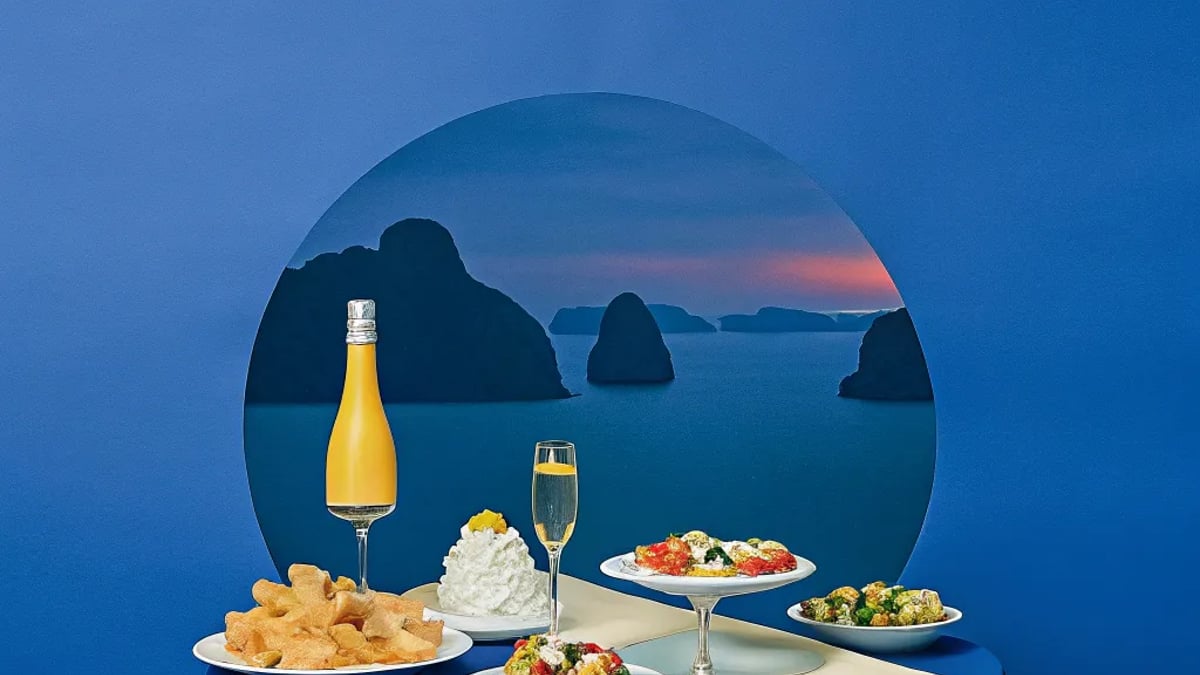
The gentle rock of ocean waves beneath your feet, the endless horizon stretching before you, and somehow—remarkably—a perfectly seared scallop with truffle risotto appears on your plate. Cruise ship dining has evolved dramatically over the decades, transforming from simple buffet fare to ambitious culinary programs that rival land-based restaurants. But does the reality match the marketing? I've spent countless hours at sea sampling everything from casual poolside bites to exclusive chef's tables to find out.
The Evolution of Cruise Ship Cuisine
Cruise dining has come a long way from the days of midnight buffets and endless shrimp cocktails. Today's cruise lines have reinvented themselves as floating culinary destinations, with many vessels housing more than a dozen distinct dining venues. This transformation didn't happen overnight.
Back in the 1980s and early 1990s, cruise dining followed a predictable pattern: assigned seating times, formal dress codes, and menu rotations that rarely surprised. The food was generally good but rarely exceptional. The focus was on abundance rather than refinement.
Norwegian Cruise Line changed everything in the early 2000s with their "Freestyle Cruising" concept, eliminating rigid dining times and introducing multiple specialty restaurants. Other cruise lines quickly followed suit, launching a culinary arms race that continues today.

"The entire industry shifted when guests started demanding more variety and flexibility," says Michael Sabourin, a former cruise line executive chef who worked for both Celebrity and Royal Caribbean. "Suddenly we weren't just feeding people—we were creating dining experiences."
This shift coincided with the broader culinary revolution happening on land, as food television exploded in popularity and diners became more adventurous and knowledgeable. Cruise lines responded by partnering with celebrity chefs, sourcing higher-quality ingredients, and developing signature dining venues that could serve as marketing differentiators.
The Celebrity Chef Effect
Today, it's nearly impossible to find a premium or luxury cruise line without at least one celebrity chef partnership. These collaborations range from menu consultation to fully branded restaurants:
- Oceania Cruises partners with Jacques Pépin as their Executive Culinary Director
- Celebrity Cruises features restaurants by Daniel Boulud
- Norwegian showcases venues by Geoffrey Zakarian and José Andrés
- MSC Cruises collaborates with multiple Michelin-starred chefs including Ramón Freixa
These partnerships have undeniably elevated cruise dining, but they also create heightened expectations. When a restaurant bears a famous chef's name, passengers naturally expect an experience comparable to their land-based establishments. This can be challenging to deliver consistently in the middle of the ocean.
The Reality of Oceanic Fine Dining
The logistics of serving thousands of passengers three or more meals daily while at sea create unique challenges that land-based restaurants simply don't face.
"People don't realize we're essentially running a small city's worth of restaurants with limited storage, no ability to get emergency deliveries, and staff working in constantly moving kitchens," explains Sarah Bronfman, a culinary director who has worked for several premium cruise lines. "It's a minor miracle that we can serve fresh seafood on day 12 of a transatlantic crossing."
Storage constraints mean ingredients must be carefully managed. Fresh produce is loaded at ports of call whenever possible, but planning is essential. Menus are designed to use ingredients in progression based on their shelf life. Items like berries might appear abundantly during the first days after departure but become scarce toward the end of a sailing.
Staffing presents another challenge. Cruise ship culinary teams often include talented professionals from around the world, but training and maintaining consistency across multiple venues requires extraordinary systems and supervision. Many crew members work contracts lasting 6-10 months, creating inevitable turnover.
Despite these challenges, many cruise lines deliver remarkable dining experiences. The question is: which ones consistently excel?
Cruise Line Cuisine Rankings: From Buffet to Gourmet
Not all cruise dining is created equal. Based on personal experience and extensive research, here's how major cruise lines stack up culinary-wise:
Luxury Tier
Oceania Cruises: Marketing themselves around "The Finest Cuisine at Sea®" (yes, they've actually trademarked this phrase), Oceania has built their entire brand identity around culinary excellence. Their commitment shows in everything from ingredient quality to preparation techniques. The line's newest ship, Vista, features 12 dining venues including Ember, a sophisticated American restaurant, and The Bakery at Baristas, serving fresh-baked pastries daily.
According to their website, Oceania sources "only the finest, freshest ingredients from around the world" and employs a higher ratio of culinary staff to guests than any other cruise line. Their partnership with Jacques Pépin has influenced their culinary philosophy for nearly two decades.
Seabourn: Despite some recent concerning reviews on Cruise Critic forums about inconsistency, Seabourn generally delivers exceptional cuisine. Their partnership with Thomas Keller (of French Laundry fame) has produced The Grill by Thomas Keller, a sophisticated venue serving elevated American classics.
One recent Cruise Critic poster noted concerns before their 20-day Seabourn cruise: "My husband is a foodie, and likes fine dining/good service (his standards are quite high)." This highlights a common tension—the higher the expectations, the greater the potential for disappointment.
Crystal Cruises: Recently resurrected under new ownership, Crystal was long known for culinary excellence. Their Vintage Room wine dinners remain among the most sophisticated dining experiences at sea.
Premium Tier
Celebrity Cruises: The "X" cruise line has invested heavily in culinary programs, with their Edge-class ships featuring over 15 distinct dining venues. Le Voyage by Daniel Boulud on Celebrity Beyond offers a genuinely upscale experience that rivals land-based fine dining.
Viking Ocean Cruises: With no additional charges for specialty restaurants, Viking delivers consistent quality across all dining venues. Their Norwegian heritage shines through in excellent seafood offerings.
Windstar Cruises: Their small ships can't accommodate numerous specialty venues, but Windstar compensates with high-quality ingredients and attentive preparation. Their deck barbecue is legendary among past passengers.
Contemporary/Mainstream Tier
Norwegian Cruise Line: NCL offers tremendous variety but inconsistent execution. As one Reddit commenter in r/Cruise noted: "The problem with food reviews from cruise passengers is one of perspective. Take someone from middle of nowhere East Texas for whom a fancy dinner is Olive Garden, and they'll rave about NCL's food. Take someone who regularly dines at high-end restaurants in NYC or LA, and they might be disappointed."
This observation highlights a critical point about cruise reviews generally—they're highly subjective and influenced by passengers' baseline expectations.
Royal Caribbean: Innovators in entertainment and activities, Royal Caribbean delivers solid if unspectacular dining in their main restaurants. Their specialty venues, particularly 150 Central Park and Wonderland, offer more ambitious cuisine.
Carnival Cruise Line: Often underestimated culinary-wise, Carnival has improved significantly under the guidance of Food Network star Guy Fieri, whose burger joints and barbecue venues have become fleet favorites. Their steakhouses offer surprisingly good value.
What Makes Cruise Dining Unique?
Beyond the logistics and ranking comparisons, cruise dining offers several unique advantages and experiences impossible to replicate on land:
Dining with a Constantly Changing View
Few experiences compare to enjoying fine cuisine while watching a Mediterranean sunset or gliding past Alaskan glaciers. The setting enhances the sensory experience in ways static restaurants cannot match.
"There's something magical about savoring a perfectly prepared meal while the scenery constantly changes," says cruise enthusiast Maria Delgado, who has taken over 30 cruises. "My most memorable meal ever was a simple breakfast on my balcony as we sailed into Santorini. The yogurt with local honey tasted better with that backdrop."
All-Inclusive Value (Sometimes)
While mainstream cruise lines have increasingly moved toward à la carte pricing for specialty restaurants, luxury lines like Regent Seven Seas, Silversea, and Seabourn include virtually all dining in their fares. This creates a different dining psychology—guests feel free to experiment and try multiple venues without worrying about additional charges.
Even on lines with supplemental charges, the pricing often represents excellent value compared to equivalent land-based restaurants. A steakhouse experience that might cost $150+ per person in a major city typically runs $35-55 on mainstream cruise lines.
The Chef's Table Experience
Many cruise lines offer exclusive chef's table experiences that provide behind-the-scenes access to ship galleys along with elaborate multi-course tasting menus. These intimate events, typically limited to 10-14 guests, often showcase the true capabilities of the culinary team beyond the constraints of mass production.
Common Questions: Is Cruise Food Actually Good?
One question dominates cruise forums and social media groups: Is the food on cruises actually good, or just good "for a cruise"?
The answer depends entirely on which cruise line, which ship, which restaurant, and—critically—your personal reference points and expectations.
Luxury lines like Oceania, Seabourn, and Silversea generally serve cuisine that would be considered excellent by any standard. The best specialty restaurants on premium lines like Celebrity and Viking would hold their own against quality urban restaurants.
Main dining rooms on most ships deliver food comparable to better chain restaurants or hotel banquet services—good but rarely memorable. The true weak spot on many ships remains the buffet, where keeping food fresh and at proper temperatures challenges even the best operations.
"The buffet is where you see the biggest difference between luxury and mainstream lines," notes cruise writer Robert Jameson. "On Seabourn or Silversea, even the buffet offerings are prepared in small batches with quality ingredients. On bigger ships, it's more about volume and variety than refinement."
Tips for Maximizing Your Cruise Dining Experience
After dozens of cruises across multiple lines, I've developed strategies for ensuring the best possible dining experiences at sea:
- Research specialty restaurants before sailing - The best venues often book quickly, especially for prime times. Make reservations pre-cruise when possible.
- Consider dining packages - Many cruise lines offer specialty dining packages that provide significant savings if you plan to try multiple venues.
- Eat when locals eat - In ports of call, avoid the tourist rush by dining when locals do—typically later than American schedules.
- Befriend the maître d' - A positive relationship with dining room management can lead to better tables and occasionally special off-menu items.
- Don't miss sea day brunches - Many ships offer elaborate sea day brunches that showcase their culinary capabilities beyond regular service.
- Try the chef's specialties - Items marked as chef's recommendations or signatures are usually reliable choices.
- Adjust expectations by venue - The poolside grill serves a different purpose than the French specialty restaurant; judge each accordingly.
The Future of Cruise Cuisine
Looking ahead, several trends are shaping the future of dining at sea:
Sustainability Focus
Cruise lines increasingly emphasize sustainable seafood programs and local sourcing. MSC Cruises recently partnered with the Marine Stewardship Council to certify their seafood chain of custody, while Hurtigruten's coastal Norway voyages feature ingredients sourced directly from ports they visit.
Dietary Accommodation
Once an afterthought, vegetarian, vegan, gluten-free, and other dietary options have become focus areas. Celebrity Cruises now offers dedicated plant-based menus in main dining rooms, while Royal Caribbean has introduced an allergen-friendly kitchen on newer ships.
Technology Integration
Digital ordering, AI-assisted meal planning, and advanced food preservation technologies are transforming back-of-house operations. Some ships now use RFID tracking for ingredients to optimize freshness and reduce waste.
Return to Authenticity
After years of molecular gastronomy and fusion experiments, many cruise lines are returning to authentic regional cuisines. Viking's "destination-focused dining" concept brings local specialties onboard, while Windstar's James Beard Foundation partnership emphasizes authentic technique and traditional preparations.
Final Thoughts: Is It Worth It?
Cruise cuisine exists in a unique context—neither purely vacation indulgence nor everyday dining. The best approach is to appreciate it for what it is: an opportunity to sample multiple dining styles and cuisines while traveling to extraordinary destinations.
For true food enthusiasts, luxury lines like Oceania and Seabourn offer genuinely excellent culinary experiences worth the premium pricing. For most travelers, premium lines like Celebrity and Viking strike a satisfying balance between quality and value.
Even on mainstream lines, specialty restaurants provide opportunities for memorable meals, while main dining rooms deliver reliable if rarely extraordinary cuisine.
The magic of cruise dining isn't just about the food itself—it's about enjoying a well-prepared meal as the sun sets over unfamiliar shores, discussing the day's adventures with new friends, and knowing that tomorrow brings another port and another culinary discovery. In that context, even a simple dish can become extraordinary.
As one seasoned cruiser told me, "I've had technically better meals at restaurants in New York or Paris, but few dining experiences compare to watching dolphins swim alongside the ship while enjoying fresh seafood. That's something no land restaurant can offer."
Have you experienced memorable meals at sea? Share your cruise dining stories in the comments below.
Tags

About Celia Armitage the Author
Celia Armitage is a seasoned travel writer who has embarked on over 50 cruises across the globe, from the majestic fjords of Norway to the vibrant ports of the Caribbean. Her unparalleled knowledge of the cruise industry and keen eye for detail make her an expert guide for travelers seeking unique and immersive shipboard experiences.
Recommended Articles
The Best Shampoos and Treatments for Psoriasis Scalp Relief
Discover the best shampoos and treatments for scalp psoriasis relief, including key ingredients and expert advice for symptom management.
The Coach Bag Women Over 50 Are Obsessed With
Discover why women over 50 are obsessed with Coach bags, emphasizing timeless style, practicality, and the resurgence of luxury fashion.
What Solo Travelers Over 50 Say They Wish They Knew Earlier
Discover what solo travelers over 50 wish they knew earlier about safety, packing, flexibility, and connecting with locals while traveling solo.
7 Ways to Support Mental Health in Older Adults
Learn 7 effective ways to support mental health in older adults. Discover strategies, activities, and resources to enhance their well-being.
5 Fresh Christmas Ideas That Make Decorating More Fun This Year
Discover five fresh ideas to make your Christmas decorating more fun! Embrace natural elements, themed decor, and unique DIY projects this holiday season.




